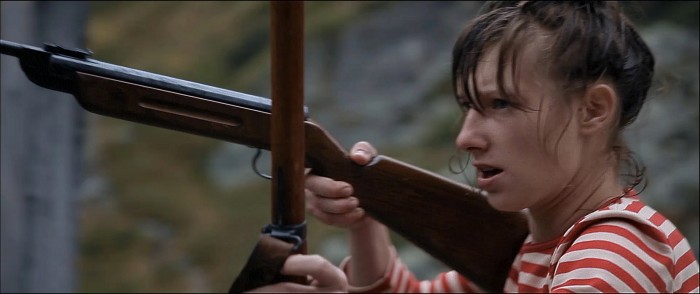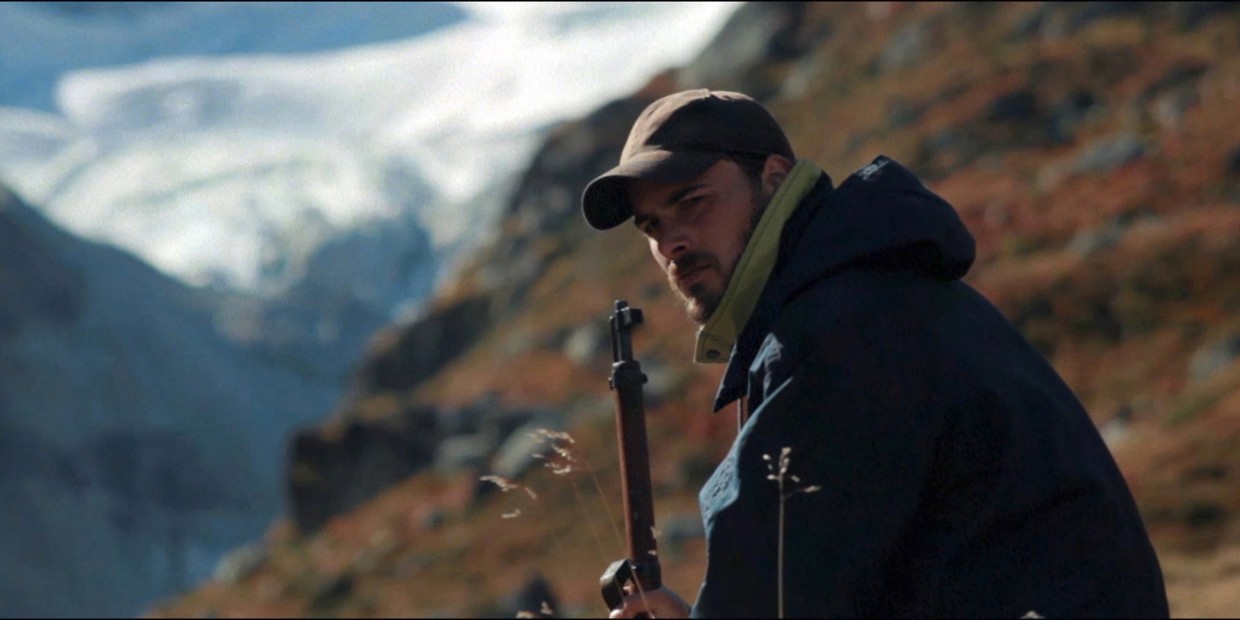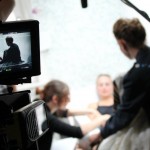Director: Hugo Bousquet
Beyond Here opens with a quote by the French historian and anthropologist, Jean-Pierre Vernant: “There is some of Hestia in Hermes and some of Hermes in Hestia. For a true inside to really exist, it has to open, to receive it within itself. And every individual must accept his share of Hestia and Hermes”.
The film does not provide a lot of background on the two main characters, Lea and Basile, as they travel through a mountain range in an unmentioned country, towards an unknown place named ‘Gondolin’. Their past is unknown, although it is implied that they are running from some sort of conflict or war. Nor is it clear exactly what Gondolin is or what the couple hope to achieve by travelling there. This limited backstory allows the characters to be seen without any of their past or history being made apparent, so the audience can make their own, unbiased judgements of them.
As the story continues, the opening quote begins to make more sense in regards to the characters. Hestia is commonly the Ancient Greek goddess of the hearth, symbolising home and family whereas Hermes is the messenger of the gods and represents transitions and travelling. Placing Vernant’s quote in context with the rest of the film presents Lea and Basile with more solidified characteristics and their representations are a lot easier to define; Lea is shown to be Hestia as she is averse to travelling any further and is content staying and making a home in the villa they’ve found. Contrastingly, Basile is representing Hermes; wanting to continue to move forward and travel further towards their goal, through the mountain pass to Gondolin.

Initially, the camera tends to follow Lea and Basile a lot, which works effectively as the story progresses and allows the audience to feel protective and invested in their journey. As the film continues and Lea and Basile become more settled in the villa, the camera focuses on wider shots of the surrounding landscape to create atmosphere as the beautiful scenery is combined with the loud and unnerving music. This, with the frequent musical crescendos, serves to create a strange atmosphere in an otherwise peaceful landscape and creates a number of very dramatic and tense moments.
The relationship between Lea and Basile is defined early on and the audience naturally feels very protective of them and their relationship. So with the introduction of Marcus, an old hunter-traveller who they happen across whilst staying at the villa, the audience, like Basile, feels initially sceptical about trusting or relying on him. However, they gradually accept him and the scenes of bonding between the three, with them sharing a meal, butchering a deer or drinking in the evening, should serve as a way of solidifying Marcus as a positive character. Yet the juxtaposition of these supposedly happy scenes with the wildly tense music, offsets the audience and creates an underlying atmosphere of tension and distrust among the trio.
Overall Beyond Here is a stunning example of how much can be achieved with a small cast and a limited setting for a film. It does a great job at creating an immersive and intriguing atmosphere; Lea, Basile and Marcus are interesting and varying characters, with plenty of depth. As a viewer, you are able to feel invested in them and their relationships before realising it and the development of these relationships, alongside the wonderfully offsetting music, creates an unnerving experience for the audience.
Watch Beyond Here on FilmDoo








